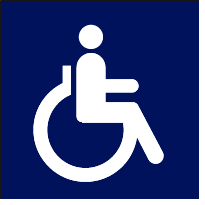

03/2005
 The
AIA will urge the U.S. Department of Justice (DOJ) to ensure that the
newly proposed Americans with Disabilities Act Accessibility Guidelines
(ADAAG) are adopted and enforced in a way that is “consistent,
clear, and certain.” The
comments come in response to the department’s Advance Notice of
Proposed Rulemaking for the new ADAAG, published by the U.S. Access Board
in July 2004. Comments are due by May 31.
The
AIA will urge the U.S. Department of Justice (DOJ) to ensure that the
newly proposed Americans with Disabilities Act Accessibility Guidelines
(ADAAG) are adopted and enforced in a way that is “consistent,
clear, and certain.” The
comments come in response to the department’s Advance Notice of
Proposed Rulemaking for the new ADAAG, published by the U.S. Access Board
in July 2004. Comments are due by May 31.
This effort represents the first major revision to the ADAAG since they were implemented following the 1990 enactment of the Americans with Disabilities Act. The DOJ has not issued a specific timeline for formal adoption and enforcement of the new ADAAG.
The AIA’s comments address a number of key issues that DOJ raised in its advance notice, including:
- Effective Date of the Revised Standards. The Department of Justice invited the public to comment on whether the new ADAAG should come into effect 6, 12, or 18 months after the Final Rule is published by DOJ. In its response, the AIA recommends a 12-month time frame.
- Safe Harbor for Existing Facilities. The AIA has recommended that the department provide a “safe harbor” for those elements that are in compliance with the ADAAG in effect at the time of construction.
- Certification of State Laws and Local Building Codes. Noting that “certification as it is currently formulated does not achieve its stated purpose because the use and application of the guidelines by the state or local agencies does not produce any benefit,” the AIA recommends that a state certification process include an explicit transfer of authority to that state for enforcement, interpretation, and certification of compliance.
Creating a transparent process
The AIA’s comments to the Justice Department’s Advance Notice
of Proposed Rulemaking resulted from an extensive process of consultation
with AIA members and committees. “As soon as the Justice Department
issued its advance notice in September, we set out to create a process
that allowed for maximum input from every AIA member,” said AIA
Manager of Federal Regulatory Activities Andrew Goldberg, Assoc. AIA. “These
steps included publicizing the advance notice in the Angle,
AIArchitect,
and the AIA’s online federal regulatory monitor page, and inviting
the AIA Knowledge Communities to provide expert input on the new ADAAG
and its adoption process.”
The AIA then convened a task force of AIA Codes and Standards Committee members and representatives from participating knowledge communities, which met in Dallas in January 2005 to review comments from individual AIA members and draft the AIA’s comments. The task force, led by Codes and Standards Committee Chair Holly Gerberding, AIA, prepared a draft for further consideration by the AIA. The draft comments were circulated at the State Government Network meeting during the February Grassroots conference in Washington. The Advocacy Committee of the Board of Directors considered the draft comments at its meeting March 8 for additional input prior to the Board’s review. Following completion of that review, the AIA’s comments will be submitted to the Justice Department.
After DOJ receives all comments, it will develop a Notice of Proposed Rulemaking, in which it will propose how the new ADAAG will be implemented and enforced. There will be another comment period following that notice. After that period closes, the Justice Department will issue its Final Rule and the timetable for its enforcement.
Copyright 2005 The American Institute of Architects.
All rights reserved. Home Page ![]()
![]()
 |
||
| Read the AIA
Angle. For more information, contact Andrew Goldberg, Assoc. AIA, manager of federal regulatory activities, 202-626-7438
|
||